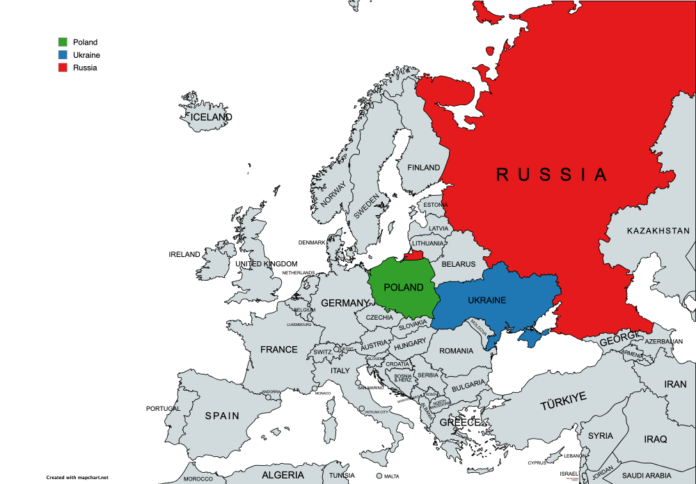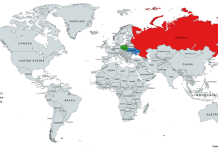
Poland said on Wednesday that multiple Russian drones crossed into its airspace overnight during a major attack on Ukraine, the first time NATO aircraft have engaged directly in the conflict since Moscow’s full-scale invasion began in 2022.
Polish Prime Minister Donald Tusk told parliament that 19 incursions were recorded, with several drones intercepted and destroyed. He described the incident as a “large-scale provocation” and said many of the drones entered Polish skies from Belarus, a close ally of Moscow.
The Polish military urged residents in three eastern provinces to stay indoors during the incursion. Fighter jets from the Netherlands and other NATO allies scrambled to support Poland, while ground-based defenses were placed on high alert. Flights were temporarily halted at Warsaw’s Chopin Airport, Rzeszów–Jasionka, and other hubs. Authorities later confirmed the airspace had reopened.
“This was an act of aggression that threatened the safety of our citizens,” Poland’s operational command wrote on social media. Officials confirmed that eight crash sites had been located, including one in the village of Wyryki where the roof of a home was damaged, though no injuries were reported.
Tusk said Poland had activated Article 4 of NATO’s treaty, a provision that allows any member to request urgent consultations. NATO officials confirmed it was only the eighth time the article had been triggered since the alliance was created in 1949. While Article 4 does not obligate members to take military action, it signals the seriousness of the threat and ensures a coordinated response.
“NATO responded quickly and decisively,” U.S. General Alexus Grynkewich, the alliance’s top air commander in Europe, said in a statement. “We are committed to defending every kilometer of allied territory.”
Dutch Defense Minister Ruben Brekelmans said F-35 jets from the Netherlands had intercepted drones over Poland. German Patriot missile batteries stationed in the country were also placed on alert, and an Italian airborne radar plane was launched to monitor the situation.
Ukraine’s President Volodymyr Zelenskyy said the direction of travel showed the incident was no accident. “Moscow always tests the limits,” he wrote, calling the incursion an extremely dangerous precedent for Europe.
European Union foreign policy chief Kaja Kallas said it represented the most serious breach of European airspace since the war began. Leaders from the Baltic states — Lithuania, Latvia, and Estonia — voiced similar concerns. Lithuanian President Gitanas Nausėda said Russia was deliberately broadening its aggression, while Estonia’s foreign minister warned that the drones were a reminder of the threat facing all NATO members.
France, Sweden, and Norway pledged solidarity with Poland, while U.S. Secretary of State Marco Rubio said Washington had been briefed on the incursion.
Russia’s envoy in Warsaw rejected the accusations, calling them “groundless.” A Belarusian military official claimed that drones had strayed off course after being jammed and were also shot down by Belarusian air defenses.
Despite these denials, many Western analysts described the move as a calculated test of NATO’s resolve. “Poland is now more directly on the front line than it was just a day earlier,” Michael Bociurkiw of the Atlantic Council told NBC News.
With NATO forces engaged for the first time, the drone incident adds new urgency to discussions about European air defenses and the risks of the conflict spilling across borders.
Green = Poland
Blue = Ukraine
Red = Russia
Image is licensed under the Creative Commons Attribution-Share Alike 4.0 International license and was created using MapChart (https://mapchart.net).







